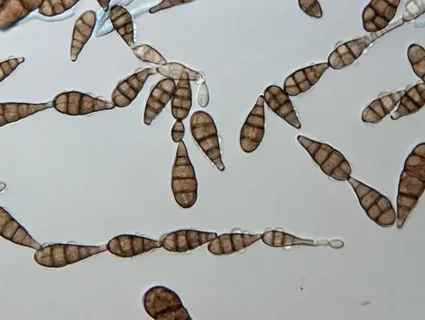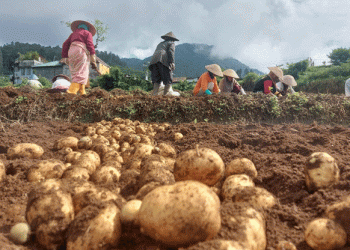Brown spot, caused by the fungus Alternaria alternata, is a common plant disease that affects crops such as citrus, apple, and pear. This article aims to provide insight into the nature and development of this disease, as well as its consequences for farmers and the agricultural industry.
Brown spot, caused by Alternaria alternata, is a significant plant disease that can cause considerable damage to crops. According to recent data from the University of Florida Institute of Food and Agricultural Sciences, brown spot can result in yield losses of up to 50% if left untreated. This disease is most prevalent in warm and humid climates, making it a particular concern for farmers in these regions.
Alternaria alternata infects plants through spores that are spread by wind, rain, or irrigation water. Once it infects a plant, it can spread rapidly, causing characteristic symptoms such as brown or black spots on leaves, fruit, and twigs. These spots can merge, leading to extensive damage to the plant, reduced photosynthesis, and reduced yield.
To prevent and manage brown spot, farmers and agricultural scientists need to implement measures such as pruning infected plant parts, using fungicides, and practicing good sanitation. Regular monitoring of crops and prompt treatment with fungicides can help prevent the spread of the disease and reduce economic losses.
In conclusion, brown spot caused by Alternaria alternata is a significant threat to global food security and agricultural sustainability. Farmers, agronomists, agricultural engineers, and scientists need to work together to prevent, manage, and mitigate the effects of this disease on crops and the agricultural industry.
#BrownSpot #AlternariaAlternata #Agriculture #PlantDisease #CropHealth #GlobalFoodSecurity #SustainableAgriculture #Fungicides #Farmers #Agronomists #AgriculturalEngineers #PlantHealth #UniversityOfFlorida #CropDamage #EconomicLosses #Pathogens








